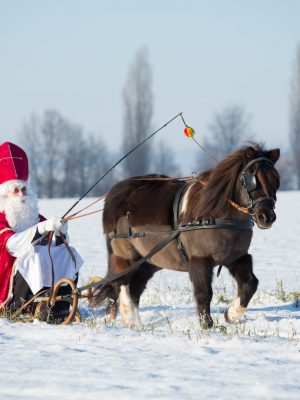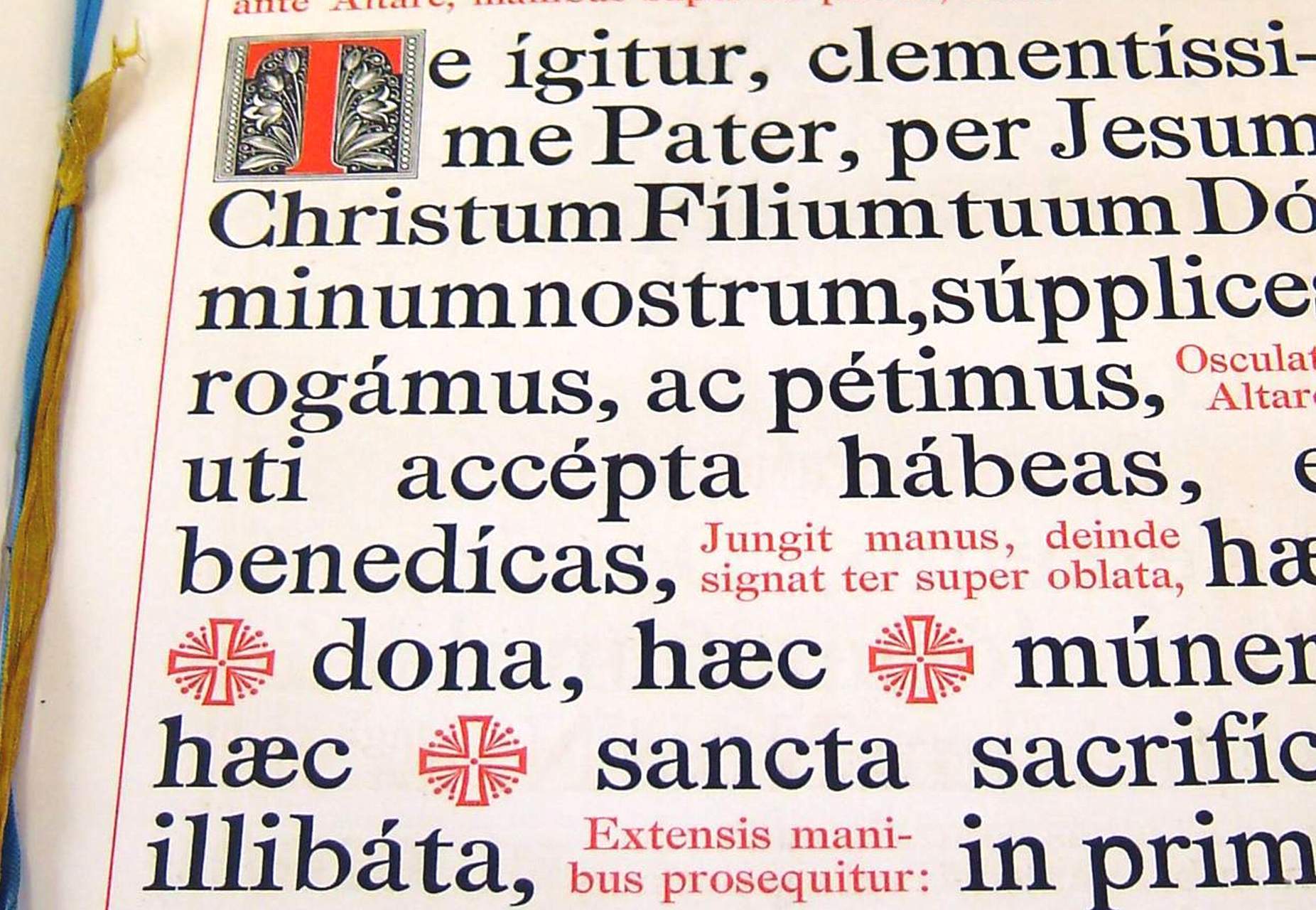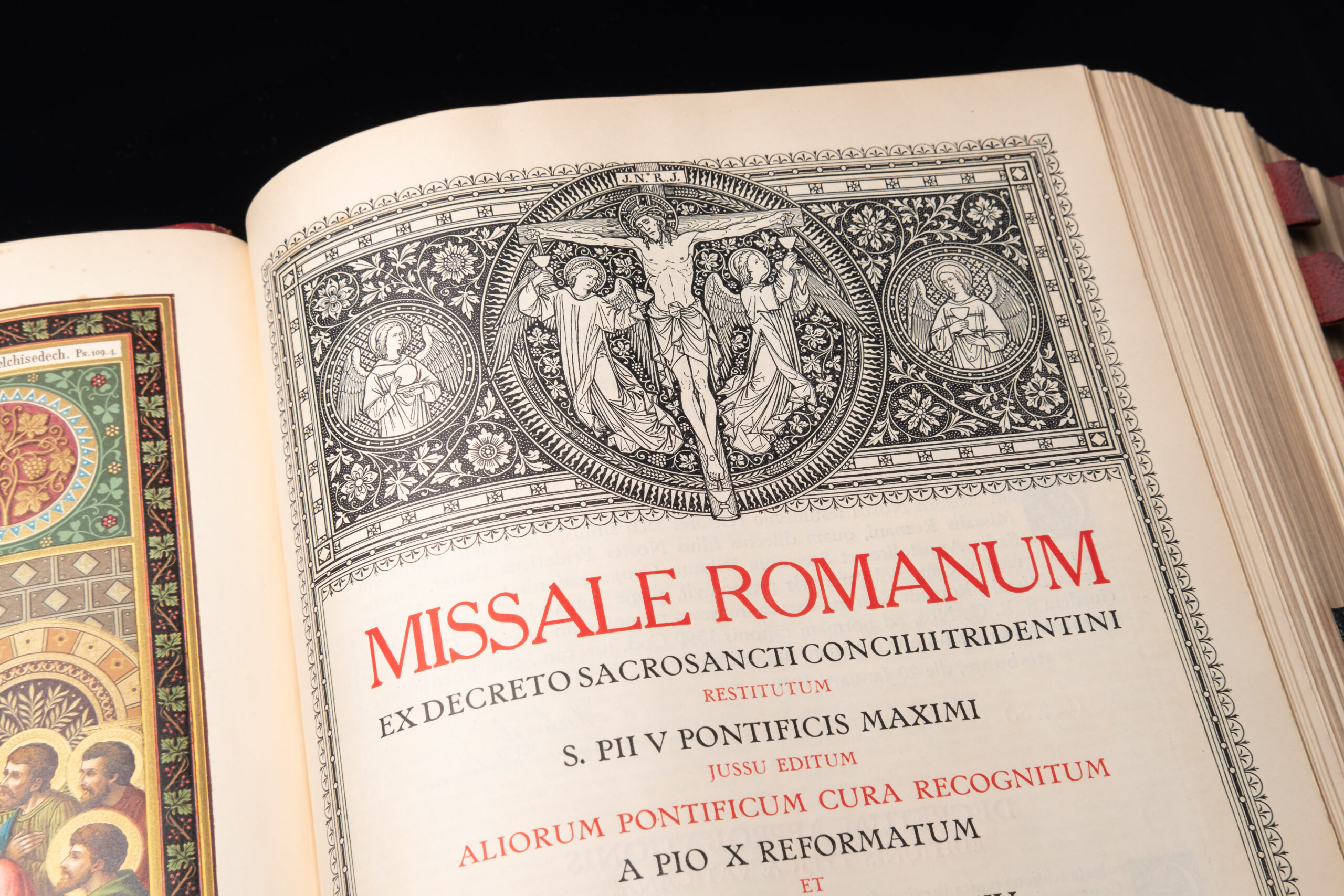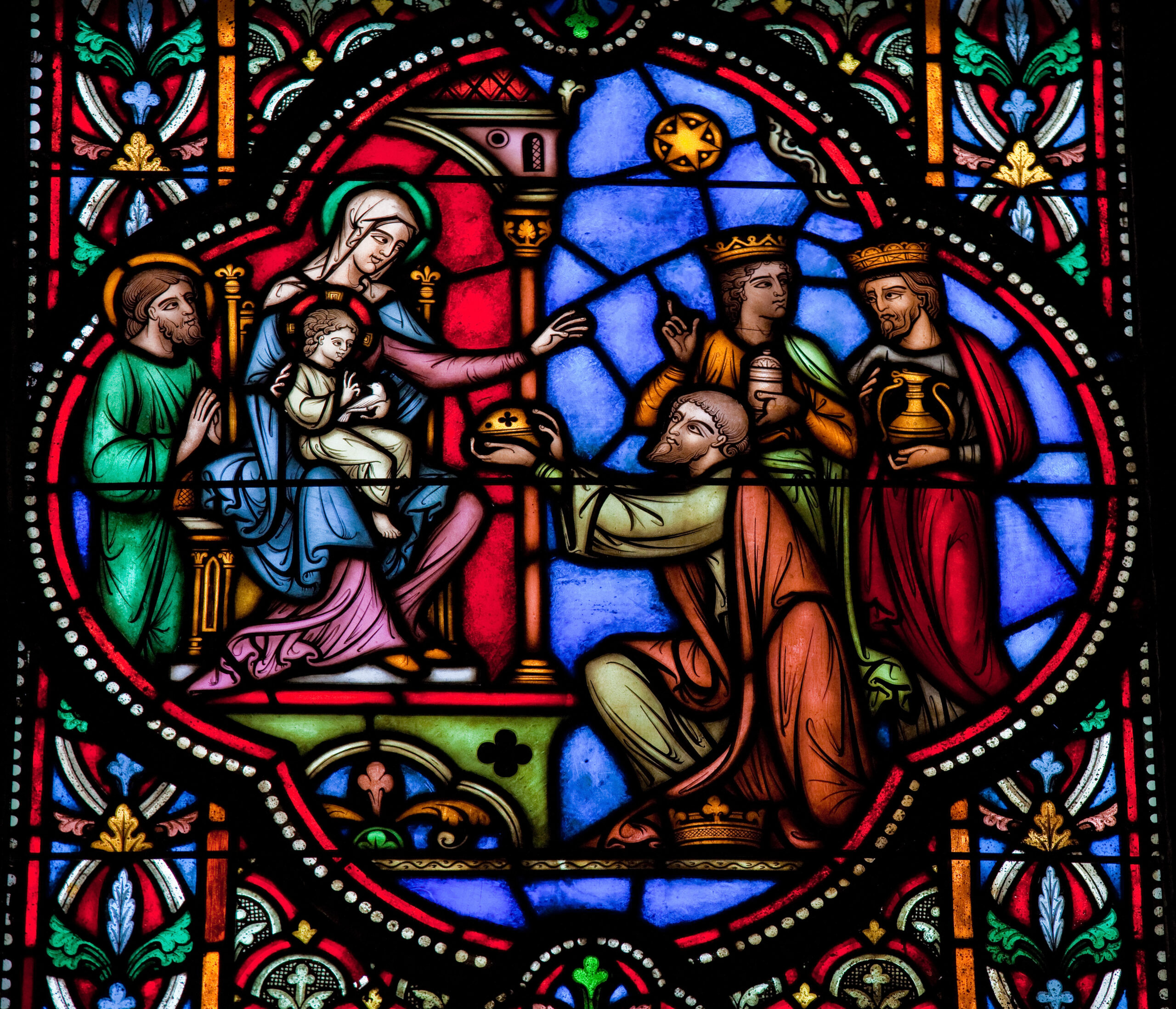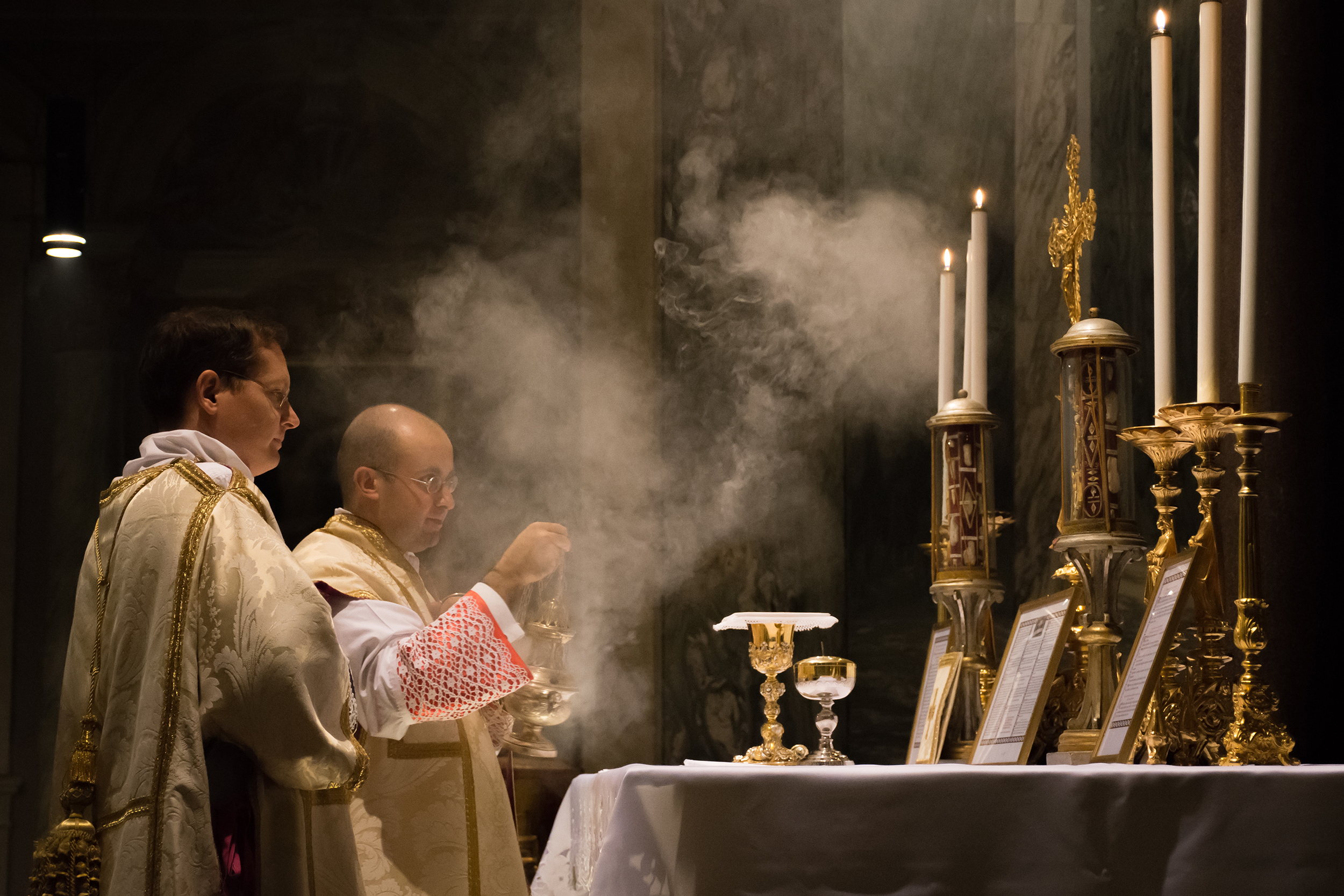“O God, Who didst adorn blessed Nicholas, Thy bishop, with miracles unnumbered, grant, we beseech Thee, that by his merits and prayers we may be delivered from the fires of hell.”
–Roman Missal, Collect for Feast of St. Nicholas
One of the most beloved of saints is St. Nicholas of Myra, an early Christian bishop of Greek descent. In many countries, but thankfully not all, St. Nicholas has become exclusively identified with the popular Santa Claus.
In the East he is known as Nicholas “the Wonderworker,” due to the many miracles attributed to his intercession. In the West he is generally known as “St. Nick,” best remembered for his legendary habit of secret gift-giving.
It is the author’s sincere hope that more modern-day Latin Rite Catholics will develop a devotion to this fascinating saint, so equally revered in East and West. It is important to note the goodness and generosity of St. Nicholas were first and foremost the measure of his holiness.
The Life and Legends of St. Nicholas
St. Nicholas, who died in 343 AD, was the bishop of the maritime city of Myra, a city in Asia Minor, today called the city of Demre, in Turkey. Although he is popular in the Greek as well as the Latin Church, nothing about him is historically certain except that he was a renowned bishop.
In his youth it is said St. Nicholas made a pilgrimage to Egypt and Palestine and shortly after his return to Turkey he became bishop.
During the persecution of Diocletian he was allegedly imprisoned, but then released after the accession of Constantine to the throne of Emperor. He then attended the Council of Nicaea in 325 AD.
When he died, the saintly bishop was buried in the cathedral at Myra, and from that time countless people flocked to visit his final resting place, seeking miracles and attributing healings through his powerful intercession. At a later date his remains were moved to Bari in Italy.
St. Nicholas is well known today by devout Catholic and Orthodox for the numerous miracles he is said to have wrought before and after his death.
Many of these stories are legends, yet rooted in real history. Catholic historian Hilaire Belloc touches on the subject of Catholic legends, explaining that legend and myth can testify to the truth of tradition.
The stories of the miracles of St. Nicholas are the outgrowth of a long oral and written tradition. Of these many stories, those of his bringing gifts to needy children during the Christmas season are of course, the most well known.
In the Roman Martyrology, one legend is told, that St. Nicholas appeared to the Emperor Constantine in Rome and dissuaded him from slaying certain people, who had invoked the intercession of the saint.
Magnificent Shrines Dedicated in Honor of the Saint
St. Nicholas has various churches dedicated in his honor throughout the Greek and Latin worlds that are significant places of prayer and artistic merit. The founding of these churches reaches back to a time when East and West were not yet divided.
In our times, the most important shrine dedicated to him is the magnificent Basilica of San Nicola in Bari, Italy to where his body was moved from his original burial site in Myra in 1087.
For 1,000 years the beautifully decorated ancient crypt of this church has been the final resting place of the saint.
Bari itself is a picturesque port city on the sea, busy in the summer while quiet in the winter, with the exception of Christmas time when an increase in visitors naturally flock to his tomb.
The author has had the privilege of visiting here once on his way to Greece from Rome, following the footsteps of countless pilgrims over the span of a millennia. Even the Crusaders came here, stopping for a visit on their way to the Holy Land.
Today pilgrims arrive by bus and ferry from across the sea, many of them from Orthodox countries such as Ukraine and Russia.
Construction of the renowned basilica began in 1087 when the bones of St. Nicholas first arrived in Bari.
Rome, too, has its own church dedicated to St. Nicholas, built from Roman ruins amid the rubble and spolia (Latin for ‘spoils’) of old temples and even a ruined ancient jail. It is called the Basilica of San Nicola in Carcere.
At this Roman shrine dedicated to the memory of the saint, relics are kept in the main altar while others are brought out for public veneration on his annual feast, with an evening Mass generally celebrated by the basilica’s very own titular cardinal.
In past years, laurel leaves were spread on the floor for this Mass, giving a unique aroma that recalls the scent of saints (the palm branch of victory and crown of laurels are common symbols of saints and martyrs).
The Artistic Flowering of Icons
In art, Nicholas is frequently depicted in icons, a reflection of the intense interior and exterior devotion shown to him in the Byzantine East.
When Kiev in the Ukraine became a Christian nation, icons of the saint greatly multiplied. These icons were painted on specially prepared wood, often by monks who prayed while creating them, making the images real sacramentals.
Icons in the East gave a tangible and popular form to the Christian dogmas preached by the Greek and Slav apostles, while also helping to spread devotion to the lives of the saints.
From Kiev to the very inception of the Russian Church, missionary priests from Ukraine trained and brought with them icon painters and their works spread and served as examples to the people of Russia where devotion to St. Nicholas exploded.
In the East an Orthodox Christian is never seen throwing away even the smallest image on paper depicting the saint. For the Christians of the East, even small holy cards have immense meaning and are cherished and are not discarded.
Icons of the saint continue to be created. He is often depicted as a Greek Rite bishop, vested in Eastern vestments, wearing an omophorion over his shoulders and front, while holding the Book of Gospels. Children are also occasionally depicted in his paintings.
The Communist Attack on St. Nicholas
During the Soviet regime the keeping of icons was forbidden, and holy pictures were destroyed and profaned, yet the love and attachment of the persecuted Russian people was demonstrated by the number of icons that were hidden and survived the purge.
Nevertheless, the Communist Party waged a war on the sprit of Christmas, abolishing the holiday and replacing St. Nicholas with “Grandfather Frost.” Similarly in the UK and the US, where religion is now considered a private affair and cash is king, St. Nicholas was gradually replaced by Father Christmas in England and ultimately Santa Claus in the United States.
Pope John Paul II, in the year before he died, published a book on his last reflections entitled, Rise, Let Us Be On Our Way. In this book, in a chapter entitled Caritas (Charity), he speaks warmly of St. Nicholas and mentions the communist attack on St. Nicholas that he witnessed in his native Poland.
He writes: “As children we all waited for Saint Nicholas to bring us presents. The communists wanted to deprive him of his sanctity, so they invented Grandfather Frost. Unfortunately in the West, Nicholas has now become popular in the context of consumerism” (Rise, Let Us Be On Our Way, p. 110).
The Wonderful Exchange of Gifts
For some families and in some countries, such as Italy, gifts have been traditionally exchanged on the Feast of the Epiphany, the day when the Magi brought their gifts to the Christ child.
In other places gifts are exchanged Christmas eve or Christmas morning. In the American tradition, the exchange of Christmas gifts has generally occurred the morning of Christmas day, with the gifts having been brought down the chimney by “jolly old St. Nick.”
In the Latin Church the Feast of St. Nicholas is held each year on December 6th, a pre-Christmas Advent celebration with a brief respite in the penitential season. On this day in many Catholic countries, gifts are also left for children.
In Germany, Switzerland, and the Netherlands it is the custom to make St. Nicholas the secret purveyor of gifts to children on his feast day.
Many families throughout the Catholic world have marked this day over the generations by having their children put out their shoes the night before (on the vigil of the feast) for St. Nicholas to fill with candy and goodies during the night.
This is a worthy custom to preserve, with parents actively fostering Catholic culture in the home.
The author has warm memories of this tradition maintained by his own father in his youth, when the six Sonnen children would line up their shoes in perfect formation at the bottom of the stairs.
In the morning, the shoes next to the piano were always filled with candy, with St. Nicholas exerting a certain fascination on account of his goodness.
A Patron Saint for All
It is no surprise St. Nicholas is the patron saint of children. He is also the patron of mariners, fishermen, the falsely accused, repentant thieves, coopers (cask and barrel makers), pawnbrokers, travelers, bankers, brewers, and more. And he is the patron saint of Russia, Greece, Naples, Sicily, Apulia, Moscow, Lorraine, and Limerick.
Pope John Paul II in his book Rise, Let Us Be On Our Way, further reminisces on St. Nicholas that as a child he, the future pope, “had a personal devotion to him” and was inspired by his love and concern for the needy.
He writes, “Naturally, like every other child, I looked forward to the gifts he would bring me on December sixth. But this expectation had a religious dimension, too. Like my peers, I felt a certain veneration toward this saint who unselfishly lavished gifts upon the people, thereby demonstrating his loving concern for them.” (Rise, Let Us Be On Our Way, p. 110).


